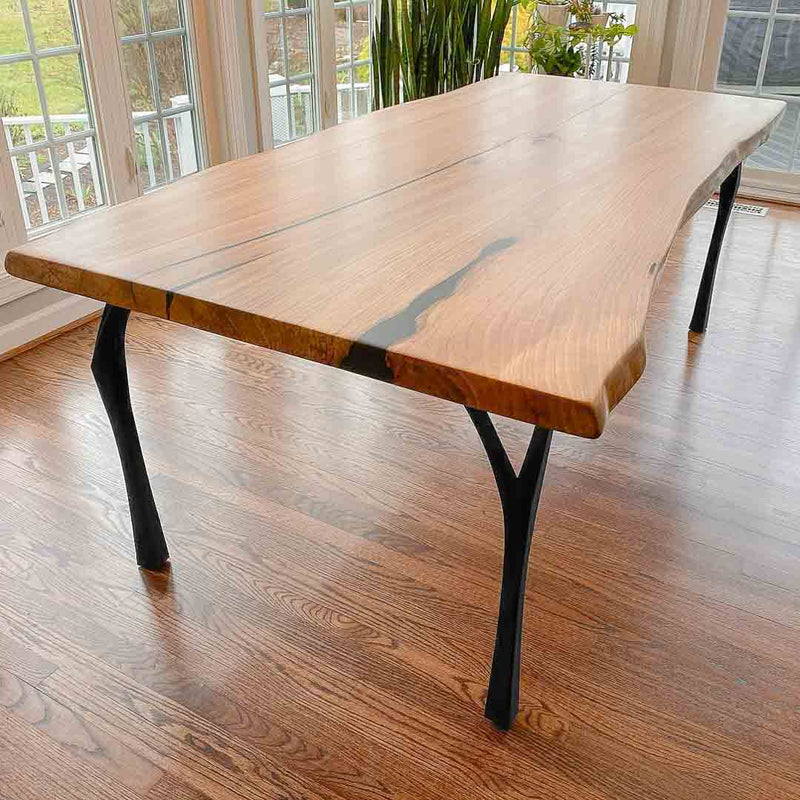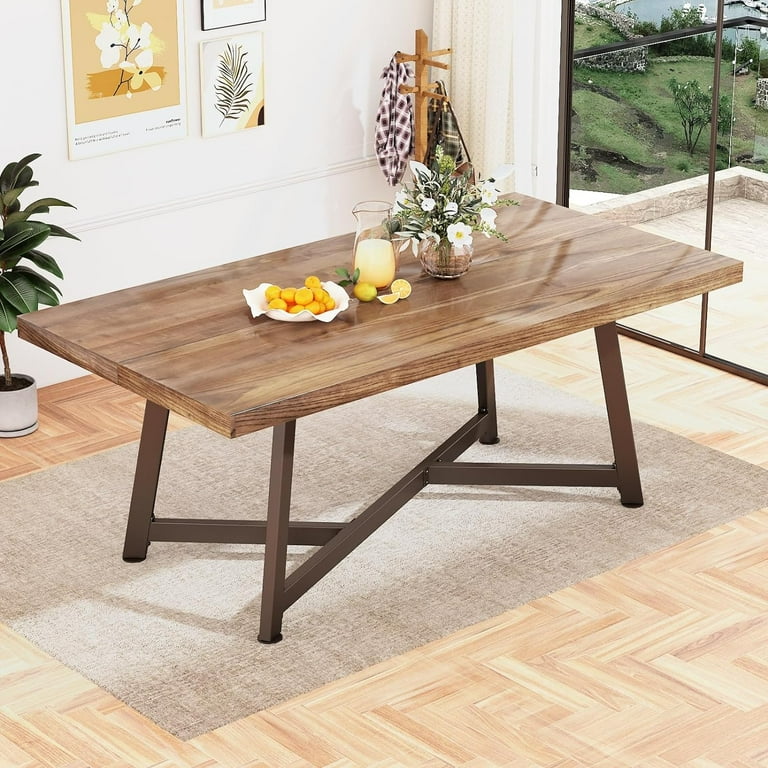How Dining Room Table Legs Can Change the Entire Aesthetic of Your Room
How Dining Room Table Legs Can Change the Entire Aesthetic of Your Room
Blog Article
From Conventional to Modern: Find the Suitable Dining-room Table Legs for Your Design
While traditional styles such as cabriole and turned legs evoke a sense of ageless refinement, modern designs like hairpin and geometric options provide a chance for striking visual rate of interest. As you take into consideration these aspects, the concern remains: how can you flawlessly integrate these diverse leg designs to produce an unified dining experience?
Recognizing Table Leg Styles
The range of eating space table leg designs can considerably influence both the appearances and performance of the space. Each leg design adds unique aesthetic components and sensible features, accommodating diverse layout choices and use requirements. Recognizing these styles is crucial for selecting the appropriate table that straightens with your total interior decoration vision.
For example, conical legs use a clean, classic appearance that can enhance an area's elegance, while pedestal bases give security and maximize legroom, making them perfect for smaller sized spaces. Barrette legs, a trademark of mid-century modern design, present a commercial style, allowing for a ventilated, open feeling. Trestle legs stimulate rustic charm, supplying durable support and a feeling of eternity.
Wood legs can bring heat and texture, whereas steel alternatives typically convey a smooth, modern vibe. Eventually, recognizing table leg designs is necessary for producing a cohesive dining location that mirrors personal design while making certain usefulness and convenience.
Conventional Table Leg Options
When picking dining-room table legs, conventional options frequently embody ageless sophistication and craftsmanship. These styles reflect an abundant heritage and a dedication to top quality, making them ideal for those that value classic visual appeals.
One of the most famous typical leg styles is the cabriole leg, defined by its stylish rounded shape. This design commonly includes ornamental makings and is most generally located in Queen Anne and Chippendale furnishings. Another preferred option is the turned leg, which flaunts a series of smooth, rounded forms that offer a traditional appearance while maintaining security.
Furthermore, the straight leg, while straightforward, provides a tough and basic framework that can mix flawlessly with a range of tabletop styles. For those attracted to ornate detailing, claw-and-ball feet legs stimulate a sense of splendour and can offer as a sensational centerpiece in any type of eating space.
Finally, stand bases, although not purely legs, give an alternative typical alternative that permits for sufficient legroom and can be magnificently sculpted. Each of these standard leg styles adds to the general setting of a dining-room, marrying feature with visual allure.

Modern Table Leg Designs
Modern table leg styles provide a varied variety of styles that highlight innovative materials and tidy lines. These designs usually focus on performance while functioning as striking focal factors within a dining room. Minimal aesthetic appeals are widespread, with legs crafted from materials such as metal, glass, and engineered wood, which add to a contemporary and ventilated feeling.
One preferred design is the barrette leg, characterized by its slender, tapered structure that gives security without frustrating the tabletop (dining room table legs). This style is frequently found in mid-century modern-day furnishings and can effortlessly enhance numerous table shapes. Another fad is using geometric forms, where legs might take on asymmetrical or angular types, including visual rate of interest and a touch of virtuosity

Blending Styles for Distinct Areas
Usually, home owners seek to develop distinct eating areas that show their individual design by mixing various design components. This technique enables the consolidation of diverse appearances, leading to a harmonious yet unique environment. For example, combining a rustic wooden table with streamlined, modern-day steel legs can develop an attractive comparison that boosts the space's total appeal.
Additionally, incorporating right here vintage table legs with contemporary table tops can stimulate a sense of background while keeping a contemporary sensibility. Such combinations not just display private preference however also motivate creative thinking, allowing home owners to curate a space that really feels both personal and inviting.
Shade plays an essential role in this mixing procedure; choosing table legs that complement or comparison with the existing shade plan can boost visual interest. Whitewashed legs can soften the boldness of a dark table surface area, developing a balanced visual.
Tips for Choosing the Right Legs
Choosing the right table legs is essential for attaining both performance and visual appeal in your eating space. Begin by taking into consideration the total design of your space. Standard settings gain from legs that feature elaborate carvings or transformed styles, while contemporary areas may call for smooth, minimalist styles.
Following, analyze the elevation and security of the legs. dining room table legs. Typical dining tables range between 28 to official statement 30 inches in height, so make certain the legs complement this measurement for convenience. In addition, robust materials, such as hardwood or steel, can boost stability and long life
Assess the leg form also-- options include straight, tapered, or stand styles. Straight legs offer a timeless appearance, while tapered legs can add a touch of sophistication. Pedestal bases supply enough legroom and are excellent for smaller spaces.
Conclusion
In recap, selecting the suitable eating room table legs Continue calls for careful factor to consider of both modern-day and traditional styles. Conventional choices such as cabriole and turned legs provide ageless beauty, while modern-day designs like hairpin and geometric shapes offer a modern touch. By balancing leg style, height, and material with the general design, a cohesive and inviting ambience can be attained. Ultimately, the selected table legs should mirror the preferred visual, boosting the eating experience within the area.
The variety of eating room table leg designs can dramatically influence both the aesthetics and capability of the space. Ultimately, understanding table leg designs is essential for producing a natural dining location that reflects individual design while making sure practicality and convenience.One of the most renowned conventional leg designs is the cabriole leg, identified by its graceful curved shape. Straight legs supply a traditional appearance, while conical legs can include a touch of beauty.In summary, choosing the suitable eating room table legs calls for cautious consideration of both standard and contemporary styles.
Report this page